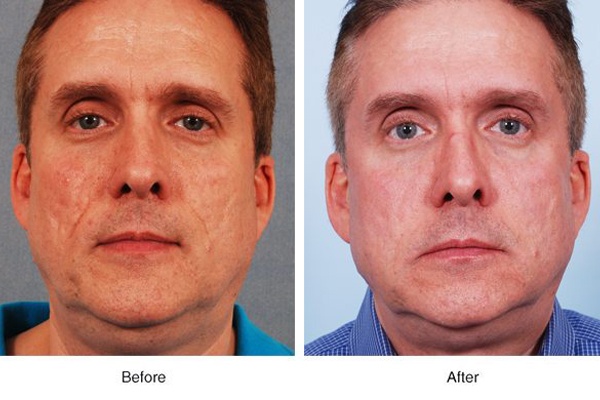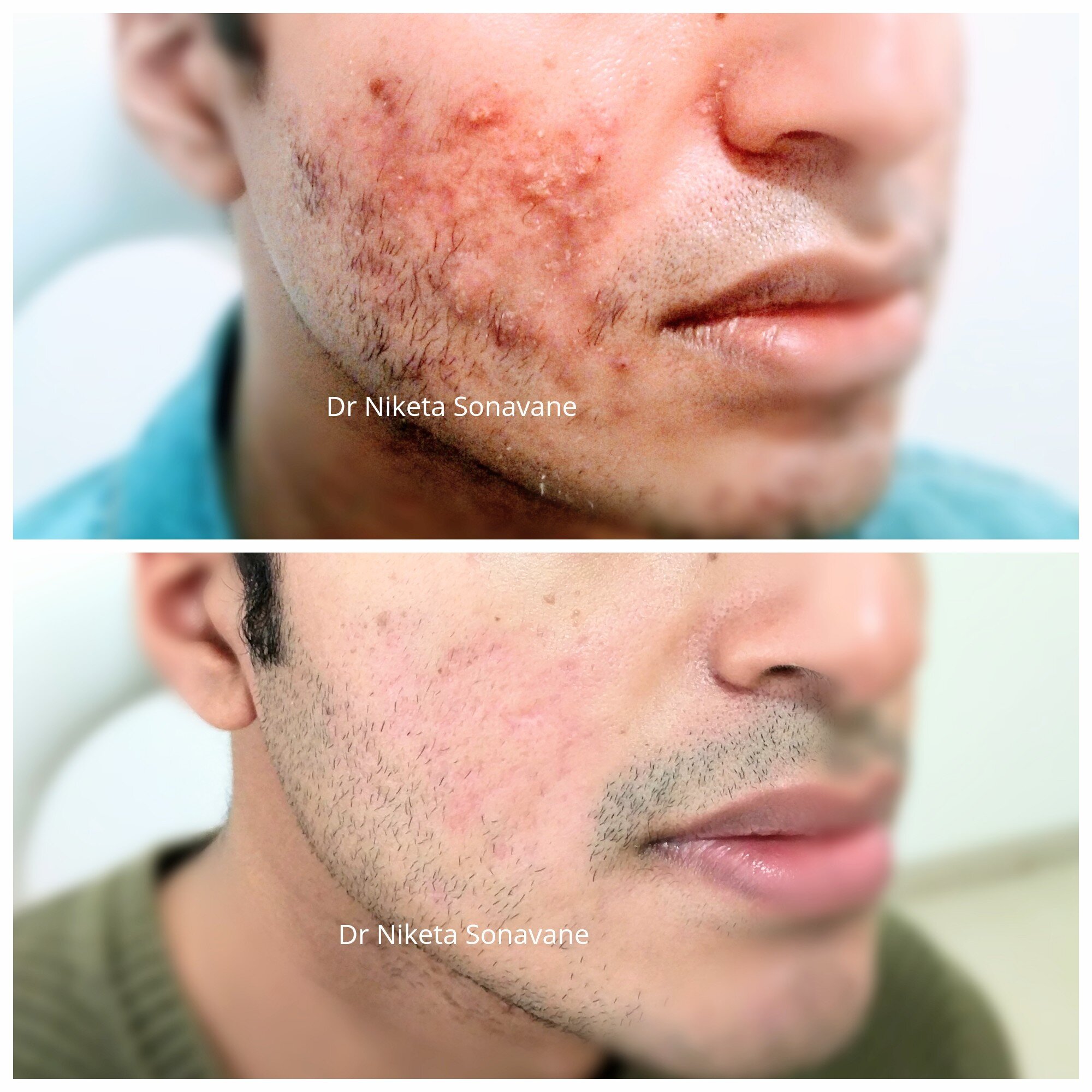Specialist Acne and Acne Scars Treatment: Durable Results for More Clear Skin
Specialist Acne and Acne Scars Treatment: Durable Results for More Clear Skin
Blog Article
Checking Out Skin Conditions: Identifying and Treating Acne Scars for Healthier Skin
Acne scars represent a considerable concern for individuals seeking to preserve healthy skin, as they can impact both appearance and self-confidence. Understanding the various types of marks, from atrophic to hypertrophic, is essential for figuring out ideal treatment options.
Comprehending Acne Marks
Recognizing acne marks is vital for any individual that has actually experienced severe acne, as these marks can have a lasting effect on both physical appearance and emotional well-being. Acne scars form when the skin undertakes inflammatory actions during active acne sores. The severity of scarring is usually influenced by variables such as the kind of acne, its period, and specific skin characteristics.
The body's natural healing process can cause either atrophic marks, which appear as depressions in the skin, or hypertrophic scars, which are increased and arise from overflow of collagen. Furthermore, the psychological toll of acne marks must not be taken too lightly; numerous people report sensations of humiliation, anxiety, and reduced self-worth. This psychological problem can affect social interactions and general lifestyle.
Attending to acne scars requires a comprehensive understanding of their formation and impact. Recognition of the possibility for long-lasting repercussions connected with untreated scars can inspire people to seek appropriate treatments. Early intervention and effective administration approaches can substantially improve skin appearance and boost psychological resilience, highlighting the importance of recognizing the intricacies bordering acne scars.
Kinds Of Acne Scars
Acne marks can be classified into distinct types, each showing unique qualities and needing details therapy methods. The key kinds of acne marks include atrophic, hypertrophic, and keloid scars.

Hypertrophic scars, in comparison, are elevated over the skin degree and are the result of excessive collagen production throughout the healing process. They usually stay within the limits of the original acne sore. Keloid scars are comparable however prolong past the initial injury website, forming larger, raised areas that can be unpleasant or scratchy.
Recognizing these sorts of scars is vital for choosing ideal therapy options. Different marks might respond much better to specific treatments, such as laser therapies, fillers, or medical interventions, stressing the significance of a tailored technique to acne scar management.
Recognizing Your Scars
When reviewing the appearance of your skin, it is critical to accurately recognize the kind of scars present, as this will certainly inform the most effective therapy strategy. Acne marks usually fall under 2 categories: atrophic and hypertrophic scars. Atrophic marks, which are the most typical, show up as anxieties or indentations on the skin. These can additionally be identified into ice-pick marks, boxcar scars, and rolling scars, each displaying distinctive attributes and calling for various methods for evaluation.
Hypertrophic marks, on the other hand, are elevated and happen as a result of excessive collagen manufacturing during the healing procedure. Identifying the particular attributes of your marks-- such as appearance, width, and depth-- is important for appropriate recognition. Furthermore, consider the distribution of marks throughout your skin, as this can suggest the seriousness and period of the acne problem.
Involving with a dermatologist can provide useful understandings right into the nature of your marks, assisting in the differentiation Continue in between numerous kinds. A thorough understanding of your scars will inevitably bring about an extra customized and reliable treatment strategy, guaranteeing a clearer and healthier skin tone.
Therapy Choices Offered
Determining the specific sort of acne marks present on your skin lays the foundation for checking out efficient therapy alternatives. Common types of acne marks include atrophic (depressed), hypertrophic (elevated), and post-inflammatory erythema.
For atrophic scars, options such as chemical peels, microneedling, and laser resurfacing are extensively utilized. Chemical peels make use of acids to get rid of the external layer of skin, promoting new cell growth.
Hypertrophic scars can be treated with corticosteroid injections to flatten the mark or laser treatment to lower soreness and improve look. acne scars. Silicone gel sheets and stress dressings might likewise aid in taking care of increased scars
In addition, facial fillers can briefly fill up in clinical depressions from atrophic marks, while medical excision may be ideal for severe situations. Each therapy choice has its advantages and factors to consider, making it vital to speak with a skin doctor. They can provide customized suggestions based upon the type and extent of your marks, as well as your skin type and total health.
Tips for Avoidance
Efficient prevention methods can significantly reduce the chance of developing acne marks. The very first step is to maintain a regular skincare routine that includes mild cleansing, exfoliation, and hydrating. Making use of non-comedogenic items assists stop blocked pores, which can aggravate acne. Additionally, including topical treatments having salicylic acid or benzoyl peroxide can properly minimize and take care of outbreaks inflammation.
Preventing the desire to pop or pick acne lesions is important, as this can bring about much deeper skin damage and raise the danger of scarring. Rather, consider using a cold compress or non-prescription treatments to minimize swelling and redness.
Sunlight security is one more crucial facet of prevention; ultraviolet (UV) rays can darken marks and impede the healing procedure. Applying a broad-spectrum sunscreen with a minimum of SPF 30 daily can protect the skin my website and advertise also healing.
Last but not least, keeping a balanced diet plan rich in minerals, antioxidants, and vitamins supports skin health and healing. Staying hydrated and handling tension degrees can also play a substantial duty in minimizing acne flare-ups. By implementing these methods, individuals can considerably reduce their possibilities of establishing acne marks.

Conclusion
In final thought, understanding and recognizing acne marks is vital for reliable treatment and attaining much healthier skin. Numerous sorts of acne marks, consisting of hypertrophic and atrophic marks, require details interventions tailored to specific requirements. Therapy choices variety from chemical peels and microneedling to corticosteroid why not look here injections, highlighting the significance of seeking advice from a dermatologist. Furthermore, taking on a gentle skincare routine and securing the skin from UV exposure can considerably add to the prevention of further scarring and general skin wellness.
The body's all-natural healing process can result in either atrophic marks, which appear as clinical depressions in the skin, or hypertrophic scars, which are raised and result from overflow of collagen. They are more split right into 3 subtypes: ice choice marks, boxcar marks, and rolling marks. Acne marks generally drop into 2 groups: hypertrophic and atrophic marks. These can even more be identified into ice-pick marks, boxcar marks, and rolling scars, each exhibiting distinctive features and requiring various techniques for assessment.
Various types of acne scars, consisting of atrophic and hypertrophic scars, require particular treatments customized to private needs.
Report this page